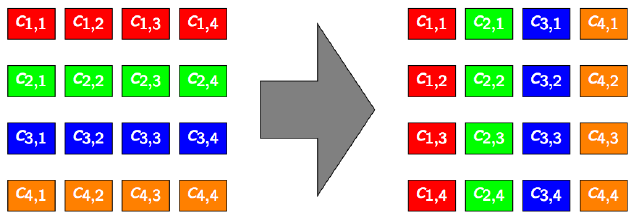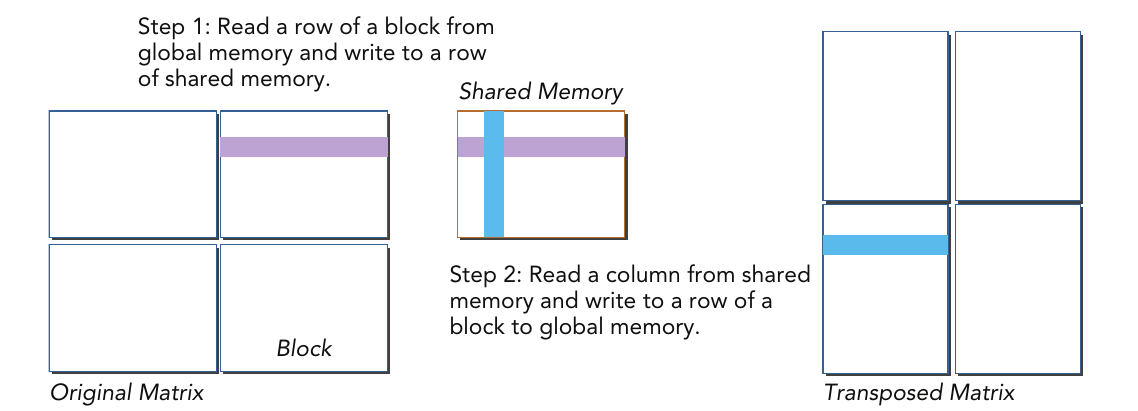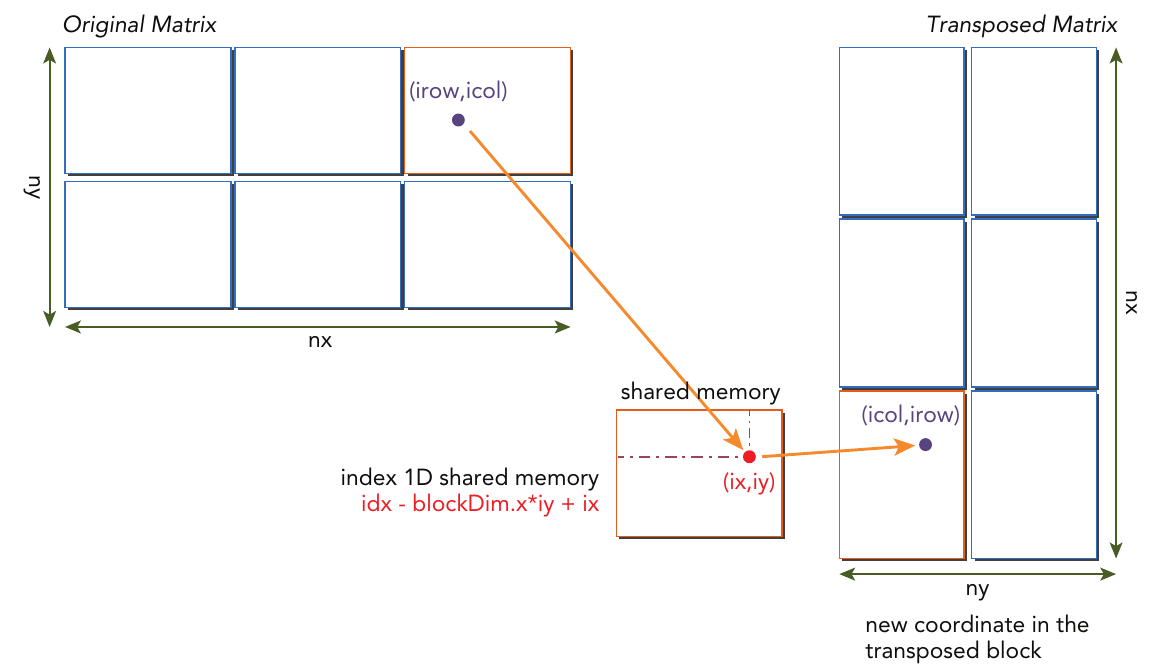Matrix transpose¶
Let \(C\) be the matrix whose elements are denoted \(c_{i,j} (i \in [1;H], j \in [1;W])\).
The elements of the transposed matrix \(C^{T}\) are denoted \(c^{T}_{i,j} = c_{j,i} (i \in [1;W], j \in [1;H])\)
Example xhen \(H = W = 4\)
Naive transpose in global memory¶
Experiments
Design one CUDA kernel transpose_naive inside the template file. The kernel is intended to achieve the parallel transposition of any matrix with power-of-two dimensions. A code skeleton is available here (do not forget to rename this file before using it). A source file of the reference function is also available here.
This first transpose kernel just needs to achieve the matrix transpose, no performance tuning is expected. The whole computation can thus be done using only the GPU’s global memory.
Keep note of the mean execution time for one 4096 x 4096 integer elements matrix.
As a reminder, the main function does the following treatments:
host-side (CPU) memory allocation for:
input data to be provided to the GPU,
output data to be copied back to CPU after kernel execution,
reference data to be compared to the GPU result in order to ensure that the GPU computation was correct.
device-side (GPU) memory allocation for:
input data from CPU (matrix to be transposed),
output data (transposed matrix).
input data generation, to fill in the matrix to be transposed. One can use random values but it may be smart to use well-chosen values in order to be able to judge the correctness just by displaying the output values.
input data copy from CPU to GPU.
grid and blocks dimensions setting.
kernel execution.
output data copy from GPU to CPU.
result checking.
Note
Debugging is one of the greatest difficulties when designing GPU programs.
However, in the matrix transpose case, it is easy to write a non-parallel CPU reference (the provided compute_gold function).
Note
the global memory read operation is coalesced within a warp (g_idata[i*j_dim +j]), while the global memory write operation exhibits strided access between neighboring threads. The performance for this naiveGmem kernel is a lower bound that progressive optimizations will be measured against.
Question
Can you justify the fact that global memory write operation exhibits strided access between neighboring threads as said in the remark above?
Balancing the computation load and memory accesses¶
The process of transposing a matrix is clearly memory bandwidth bound, ie. it’s performance is limited by the memory accesses.
A commonly used approach to override such a limitation is to give more computation to each thread. In our case, one could imagine that each thread would transpose 4 or 8 elements instaed os just one. If all those elements belong to the same block, they are stored in shared memory during the data fetching step and thus, no additionnal memory access is generated.
Experiments
Design a GPU kernel transpose_shared_nobc_balanced that implements the above principle with various thread loads (2, 4, 8, 16 elements).
Compare the performance with the previous kernels.


